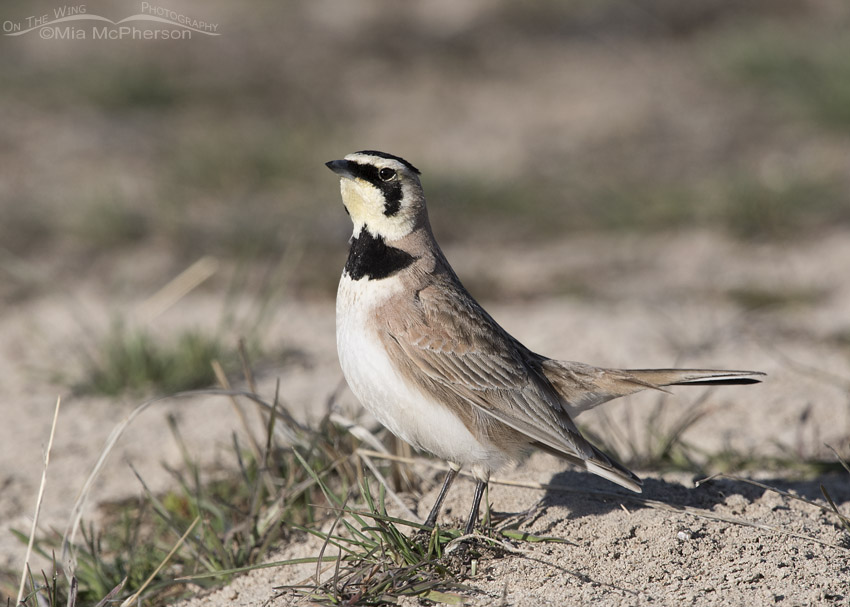 Male Horned Lark territorial behavior – Nikon D500, f8, 1/1250, ISO 400, Nikkor 500mm VR with 1.4x TC, natural light
Male Horned Lark territorial behavior – Nikon D500, f8, 1/1250, ISO 400, Nikkor 500mm VR with 1.4x TC, natural light
Yesterday I spent the morning photographing birds on Antelope Island State Park, it was mostly sunny and windless and there was more bird activity on the island than I have seen in a while.
The most interesting activities I saw yesterday were territorial behaviors and chases between two male Horned Larks in an open area of the park. When I first spotted the males they were involved in an aerial fight and when they landed and I was close enough to photograph them they began to chase each other.
Sometimes Horned Larks simply chase the intruding males out of their territory and at times it is a “tit-for-tat” chase where they chase each other back and forth over the territorial boundary.
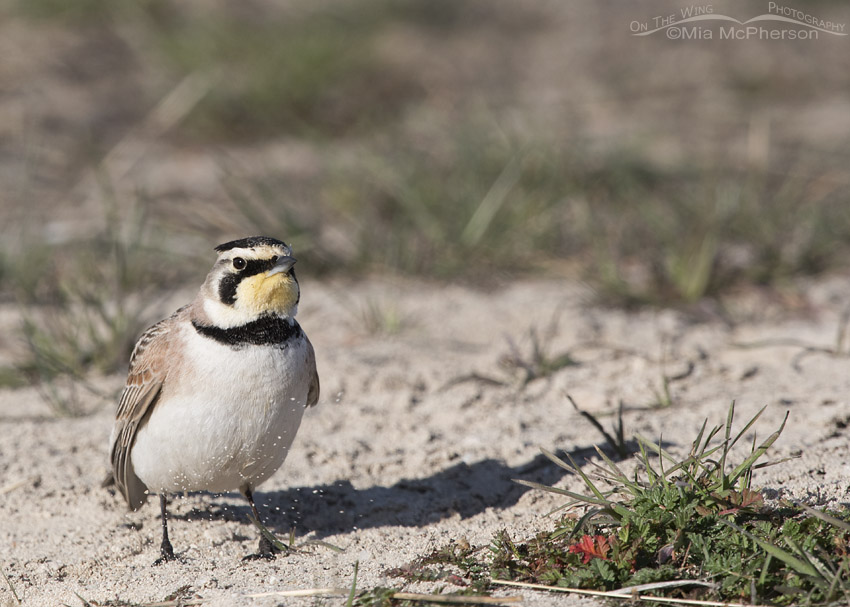 Territorial male Horned Lark simulating feeding – Nikon D500, f8, 1/1250, ISO 400, Nikkor 500mm VR with 1.4x TC, natural light
Territorial male Horned Lark simulating feeding – Nikon D500, f8, 1/1250, ISO 400, Nikkor 500mm VR with 1.4x TC, natural light
The male Horned Larks I saw and photographed yesterday seemed to be involved in the tit-for-tat chase because one would chase the other for a bit and then the roles would reverse. Literature also mentions that both males will stop and feed or simulate feeding during these chases and I observed that both of these males would stop and appear to look for food but I never saw either one feed on anything. This male kicked up some sand with its bill while simulating feeding.
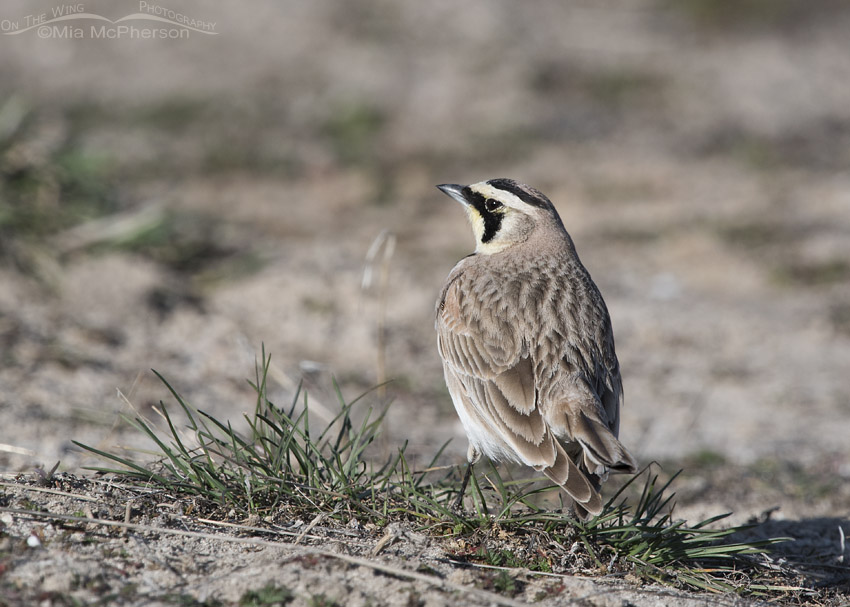 Male Horned Lark watching another male – Nikon D500, f8, 1/1250, ISO 400, Nikkor 500mm VR with 1.4x TC, natural light
Male Horned Lark watching another male – Nikon D500, f8, 1/1250, ISO 400, Nikkor 500mm VR with 1.4x TC, natural light
Both males spent time watching the other male when they would briefly stop chasing each other.
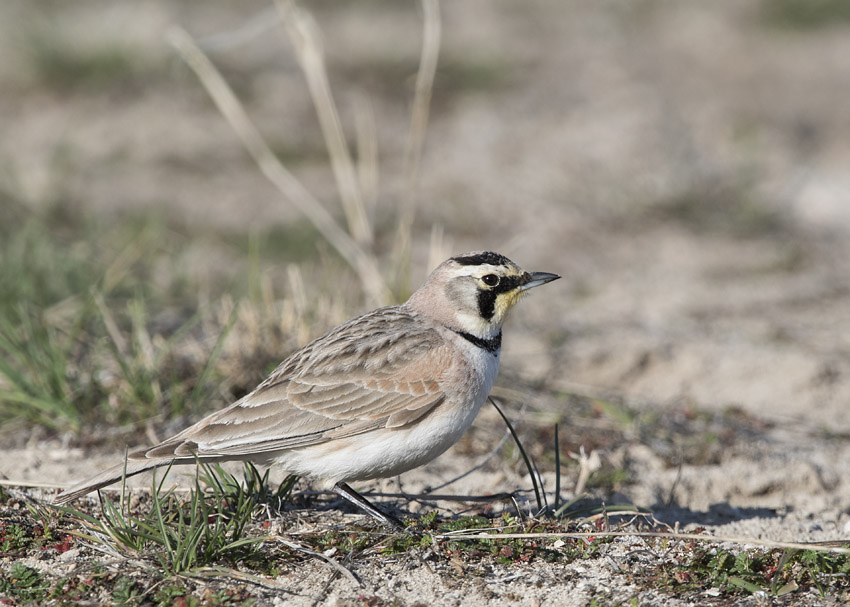 Male Horned Lark during a territorial chase – Nikon D500, f8, 1/1000, ISO 400, Nikkor 500mm VR with 1.4x TC, natural light
Male Horned Lark during a territorial chase – Nikon D500, f8, 1/1000, ISO 400, Nikkor 500mm VR with 1.4x TC, natural light
I photographed these two male Horned Larks for about three minutes before a large shadow of a bird scared them off. That bird might have been a Prairie Falcon I had seen perched on a post just before I saw the larks.
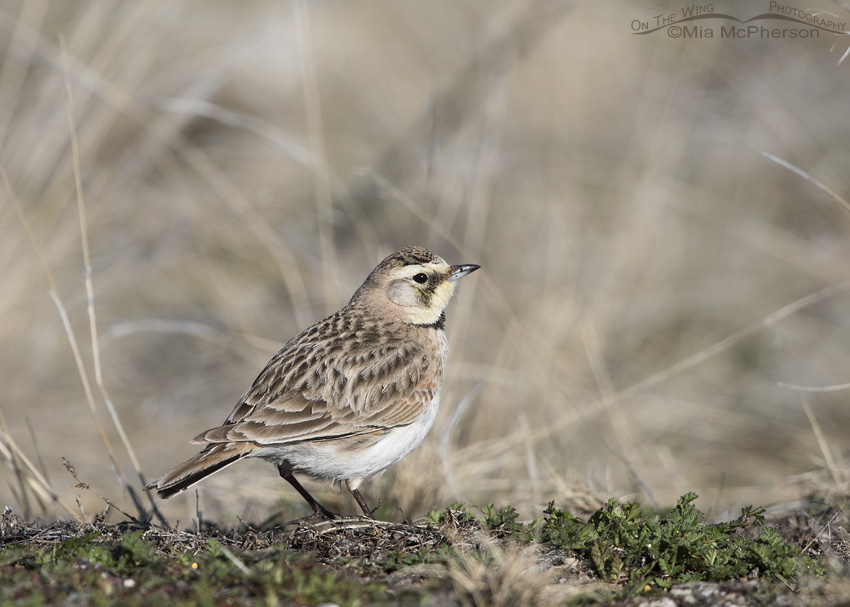 Female Horned Lark on a small knoll – Nikon D810, f6.3, 1/3200, ISO 400, Nikkor 500mm VR with 1.4x TC, natural light
Female Horned Lark on a small knoll – Nikon D810, f6.3, 1/3200, ISO 400, Nikkor 500mm VR with 1.4x TC, natural light
Of all the Horned Larks I saw yesterday I only saw one female not far from the two males that were chasing each other. My view of her was obstructed by grasses so I was somewhat disappointed that I wasn’t able to photograph her. I am including an image of a female I photographed last year in roughly the same area of the park to show the differences in gender. The females are slightly duller in appearance and their “horns” are less visible.
An interesting behavior I saw with these two males and another pair of males was that one of the males would droop their wings and then vibrate one wing. I have not seen this behavior in Horned Larks before and I am unable to find any literature on it. It was fascinating to see even though I don’t know what the behavior was about.
Life is good.
Mia


I am glad that the presence of a predator made them reassess their priorities.
Interesting series…the backward head tilt reminds me of the arrogant, combative posture of the Geat Cheato ( or should I say, Cheatus)…